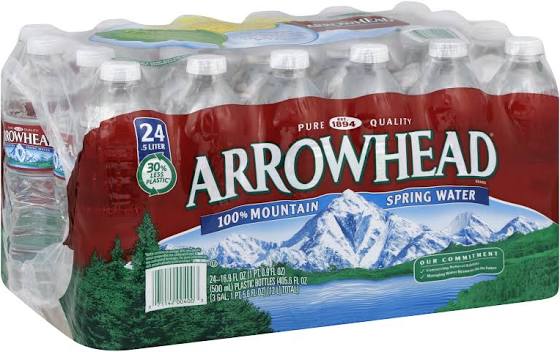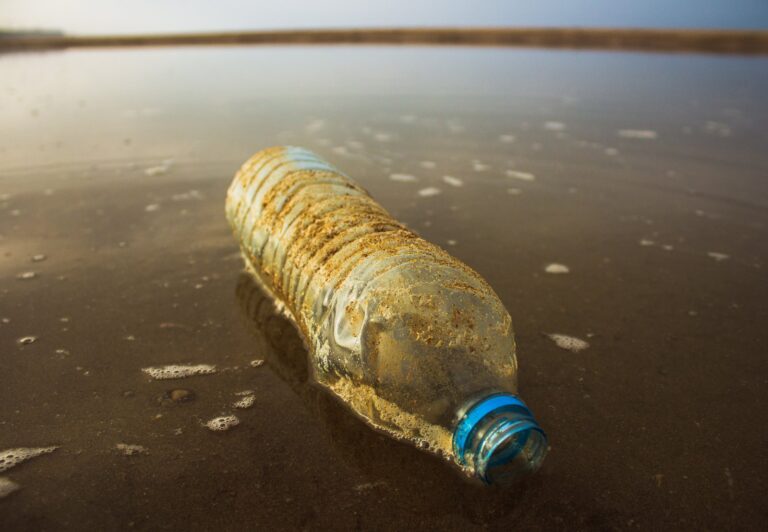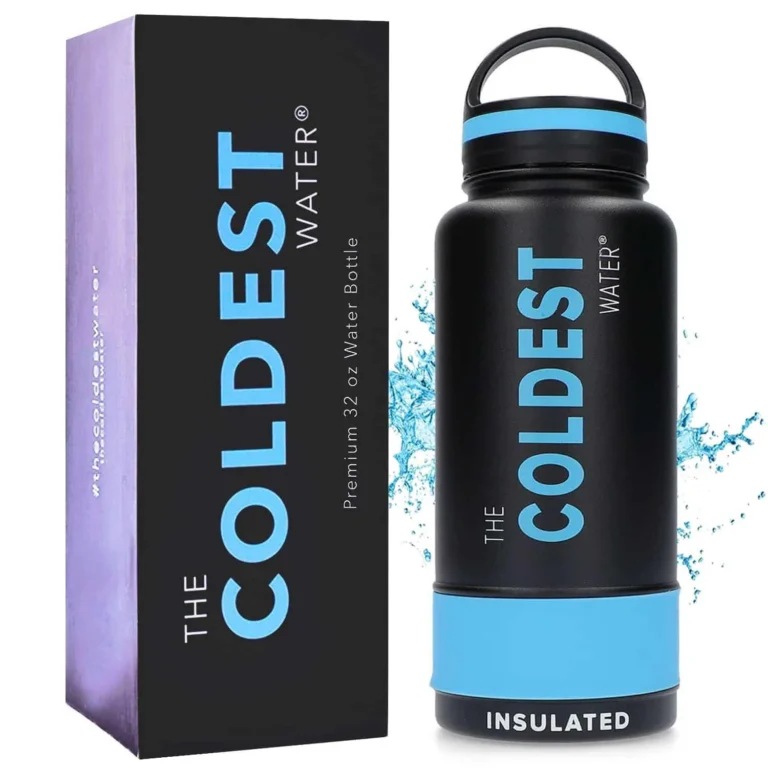Water is an essential element of our daily lives, but not all water is created equal. In this blog post, we delve into the topic of Arrowhead water and why it may not be the best choice for your health. Backed by factual data, we explore the potential negative effects of Arrowhead water on our bodies, including oxidation and inflammation. Additionally, we discuss the issue of containment, with Arrowhead water being packaged in plastic bottles that can potentially release harmful chemicals. Join us as we uncover why Arrowhead water may not be the optimal choice for your hydration needs.
I. Introduction to Arrowhead Water
Arrowhead Water Background Information
Arrowhead Water is a popular brand known for its bottled water products. It originated in the United States and has been in operation for over 120 years. The company sources its water from natural springs located in various regions, including the Sierra Nevada Mountains. With a focus on providing consumers with fresh and pure water, Arrowhead has gained a reputation for delivering high-quality products.
Arrowhead offers a variety of bottled water options to cater to different consumer preferences. These options include spring water, mountain spring water, and sparkling water. The brand prides itself on its commitment to providing refreshing and hydrating beverages that can be enjoyed on the go or at home.
However, in recent years, concerns have emerged about the environmental impact of Arrowhead’s water bottling operations. Some communities have raised objections to the extraction of water from local sources, as it can place strain on natural ecosystems and lead to depletion of groundwater reserves.
There have also been concerns about the quality of Arrowhead water. Some studies have found trace amounts of chemicals in the water, including arsenic and bromate, which have been linked to health risks when consumed in high quantities. While the levels of these chemicals are within legal limits, some consumers may prefer to seek alternative water sources that have undergone more rigorous purification processes.
In response to these concerns, Arrowhead has implemented sustainability initiatives to minimize its environmental footprint. These include investing in water conservation efforts, using eco-friendly packaging materials, and partnering with local organizations to protect water sources. However, critics argue that more needs to be done to address the environmental and health-related issues associated with water bottling operations.
In conclusion, while Arrowhead Water has a long-standing history and offers a range of products, it is important for consumers to consider the potential environmental impact and water quality concerns associated with bottled water. Making informed choices about water consumption can help promote sustainability and protect natural resources for future generations.
Overview of Arrowhead Water Products
Arrowhead Water is a popular brand of bottled water that is owned by Nestle Waters North America. The company offers a variety of products, including still and sparkling water options. Arrowhead Water is sourced from mountain springs in California and other western states, and it is marketed as being pure and refreshing.
Here is an overview of some of the key products offered by Arrowhead Water:
- Arrowhead Mountain Spring Water: This is the flagship product of the brand and is sourced from carefully selected mountain springs. It is available in various sizes, including individual bottles, multipacks, and larger containers for home or office use.
- Arrowhead Sparkling Water: For those looking for a carbonated option, Arrowhead also offers a range of sparkling water flavors. These come in both regular and unsweetened varieties, providing a refreshing alternative to sugary beverages.
- Arrowhead Brand Distilled Water: This product is specially treated to remove all impurities and minerals, making it suitable for use in appliances, steam irons, and other applications where pure water is required.
- Arrowhead Brand Fluoridated Water: To promote good dental health, Arrowhead offers a fluoridated water option. Fluoride has been shown to help prevent tooth decay and is added to the water in safe and controlled amounts.
It is important to note that while Arrowhead Water offers a range of products, there have been concerns raised about the environmental impact of bottled water and the potential for contamination. Consumers should weigh the convenience of bottled water against the negative effects on the environment and consider alternative sources of clean, safe drinking water.
II. Controversies Surrounding Arrowhead Water
Environmental Impact of Arrowhead Water Bottling
The environmental impact of Arrowhead Water bottling has raised concerns among environmentalists and local communities. The bottling process requires large amounts of water, leading to the depletion of local water sources. Extraction of groundwater for bottling operations can also have negative effects on the surrounding ecosystem, including the disruption of aquatic habitats and reduced water availability for local residents and wildlife.
Additionally, the production and transportation of plastic bottles contribute to pollution and waste. Plastic bottles take hundreds of years to decompose, leading to the accumulation of plastic waste in landfills and oceans. The energy and resources required to produce and transport these bottles also contribute to carbon emissions and climate change.
Many communities have opposed Arrowhead Water bottling plants due to concerns about the impact on their local water sources and the environment. Community members worry about the long-term sustainability of water resources in areas where Arrowhead operates.
Here are some key environmental issues associated with Arrowhead Water bottling:
- Depletion of local water sources
- Disruption of aquatic habitats
- Reduced water availability for local residents and wildlife
- Production and transportation of plastic bottles
- Accumulation of plastic waste in landfills and oceans
- Increased carbon emissions and contribution to climate change
As consumers, it is important to be aware of the environmental impact of the products we choose and consider more sustainable alternatives to bottled water. Campaigns promoting reusable water bottles and investing in water filtration systems at home can help reduce the environmental footprint of water consumption.
Concerns about Arrowhead Water Quality
Concerns about the quality of Arrowhead Water have been raised by consumers and environmental advocates. One of the main concerns is the presence of various chemicals in the water, including arsenic and bromate. Arsenic is a naturally occurring element that can contaminate groundwater, while bromate is a disinfection byproduct that forms when water is treated with ozone or chlorine. Both chemicals have been linked to potential health risks when consumed in high levels.
In addition to chemical contaminants, there have also been concerns about the overall taste and odor of Arrowhead Water. Some consumers have reported a strong chlorine taste, which can be off-putting to those seeking a clean and refreshing drinking experience.
Furthermore, the bottling operations of Arrowhead Water have come under scrutiny for their impact on local water sources. The process of extracting and bottling water has raised concerns about excessive water usage, particularly in drought-prone areas. Critics argue that bottling operations can deplete local water supplies, potentially exacerbating water scarcity issues in the region.
However, it is important to note that Arrowhead Water has implemented various sustainability initiatives to address these concerns. They have made efforts to reduce their water usage and improve their environmental impact. Additionally, the company has invested in community projects, such as watershed restoration, and has taken steps to improve their corporate social responsibility efforts.
In the end, consumers should be aware of the potential concerns surrounding Arrowhead Water and make informed choices based on their own preferences and values. It may be beneficial to explore alternative options that align with personal sustainability and health goals.
III. Impacts on Local Communities
Effects of Arrowhead Water Bottling Operations on Local Water Sources
The bottling operations of Arrowhead Water have raised concerns regarding their impact on local water sources. One of the main concerns is the significant amount of water extraction that takes place for the production of Arrowhead Water bottles. This extraction can potentially lead to a decrease in the availability of water for local communities and ecosystems.
The bottling process requires large amounts of water, which are sourced from springs and groundwater sources near Arrowhead Water plants. This extraction can have a negative impact on the environment by depleting water sources and disrupting the natural flow of water in these areas.
Furthermore, the transportation and storage of Arrowhead Water bottles also contribute to their impact on local water sources. The production and distribution of plastic bottles require substantial amounts of energy and water, further straining local resources.
In addition to the environmental concerns, the extraction and bottling operations of Arrowhead Water have faced opposition from local communities. Many residents and environmental activists argue that the company’s activities put a strain on local water supplies and contribute to the commodification of water.
Overall, the bottling operations of Arrowhead Water have significant effects on local water sources, raising concerns about sustainability and the long-term availability of water for communities and ecosystems. It is important for consumers to be aware of these issues and consider alternative options for their water consumption to support more sustainable practices.
Community Opposition to Arrowhead Water Bottling Plants
Community opposition to Arrowhead Water bottling plants has been a concern for many local residents. In various communities where Arrowhead Water operates, there have been protests and campaigns against the company’s extraction of water resources.
One of the main concerns is the impact on local water sources. Many activists argue that the ongoing extraction by Arrowhead Water has put a strain on the local water supply, especially in areas prone to drought. There is a fear that the continuous operation of the bottling plants is depleting the water sources and leaving the communities at risk of water scarcity.
Additionally, the environmental impact of Arrowhead Water bottling plants is a significant point of contention. Critics argue that the plastic waste generated by the company’s bottled water contributes to pollution and harms wildlife. They advocate for more sustainable alternatives to bottled water and emphasize the need to protect natural resources.
Community opposition groups have organized protests, petitions, and awareness campaigns to highlight the concerns surrounding Arrowhead Water. They call for increased transparency from the company, stricter regulations on water extraction, and a shift towards more sustainable practices.
It is essential for consumers to be aware of these concerns and make informed choices about the products they purchase. Supporting companies that prioritize sustainability and environmental responsibility can help drive positive change and safeguard local communities and water sources.
IV. Health Concerns
Chemicals Found in Arrowhead Water
There have been concerns about the chemicals found in Arrowhead Water, raising questions about its safety for consumption. Independent studies and investigations have found traces of various contaminants in Arrowhead Water, including:
- Arsenic: Arsenic is a naturally occurring element that can seep into groundwater. Elevated levels of arsenic have been detected in some samples of Arrowhead Water, which can pose a health risk when consumed over a long period.
- Chlorine: Municipal water supplies often use chlorine as a disinfectant. While the levels of chlorine in Arrowhead Water are generally within acceptable limits, some individuals may be sensitive to its taste or smell.
- Fluoride: Arrowhead Water contains fluoride, which is added to drinking water to prevent tooth decay. While fluoride is safe at appropriate levels, excessive ingestion can lead to dental fluorosis and other health issues.
- Trihalomethanes (THMs): THMs are byproducts of the disinfection process using chlorine. High levels of THMs have been found in some samples of Arrowhead Water, posing a potential risk to human health when consumed in large quantities.
It’s important to note that the levels of these chemicals in Arrowhead Water are regulated by governmental agencies such as the Environmental Protection Agency (EPA) and the Food and Drug Administration (FDA). Arrowhead Water undergoes regular testing and must meet specific quality standards to ensure consumer safety.
Consumers concerned about the presence of these chemicals in their drinking water may consider investing in water filtration systems or opting for alternative sources of water.
Potential Health Risks of Arrowhead Water Consumption
Consuming Arrowhead water may pose potential health risks due to several factors. One concern is the presence of contaminants in the water. Studies have detected various chemicals and substances in Arrowhead water that can be harmful to human health, including arsenic, nitrates, and bacteria like coliform and E. coli. These contaminants can lead to serious health issues, such as gastrointestinal illnesses, kidney problems, and increased cancer risks.
Another potential health risk is the packaging of Arrowhead water. The plastic bottles used to package the water can leach harmful chemicals into the water, especially when exposed to heat or sunlight. These chemicals, such as phthalates and BPA, are known to disrupt hormonal functions and have been linked to various health problems, including reproductive issues and developmental disorders.
Furthermore, the environmental impact of Arrowhead water bottling operations can have indirect health consequences. The extraction and bottling of water can deplete local water sources, leading to water scarcity for the surrounding communities. This scarcity can result in health risks, such as compromised hygiene and sanitation conditions, which can contribute to the spread of diseases.
To ensure the safety of drinking water, it is recommended to opt for filtered tap water or look for reputable bottled water brands that undergo rigorous testing and adhere to strict quality standards. It is also important to consider the environmental implications of bottled water and make sustainable choices for the benefit of both personal health and the planet.
V. Sustainability and Corporate Responsibility
Arrowhead Water Sustainability Initiatives
Arrowhead Water, a subsidiary of Nestle, has implemented several sustainability initiatives aimed at reducing its environmental impact and promoting responsible water management:
- Water Conservation: Arrowhead Water is committed to reducing its water consumption by implementing efficient production practices and investing in water-saving technologies. This includes optimizing water usage during the bottling process and minimizing waste.
- Packaging Innovation: The company is actively working towards reducing its plastic waste by using lightweight and eco-friendly packaging materials. Arrowhead Water has made efforts to increase the recyclability of its bottles and promotes the importance of recycling among its consumers.
- Local Watershed Stewardship: Arrowhead Water recognizes the importance of protecting local watersheds and invests in watershed restoration projects. This includes partnering with local organizations and communities to improve water quality, restore habitats, and conserve water resources.
- Renewable Energy: As part of its sustainability initiatives, Arrowhead Water is transitioning towards renewable energy sources for its bottling operations. This includes investing in renewable energy projects and implementing energy-efficient technologies to reduce its carbon footprint.
- Community Engagement: Arrowhead Water actively engages with local communities through educational programs and initiatives that promote water conservation and environmental stewardship. This includes collaborating with schools, community organizations, and government agencies to raise awareness about responsible water use.
These initiatives reflect Arrowhead Water’s commitment to sustainability and addressing concerns about the environmental impact of its operations. However, it is important for consumers to make informed choices and consider alternatives to bottled water to further reduce their environmental footprint.
Evaluation of Arrowhead Water’s Corporate Social Responsibility Efforts
When evaluating Arrowhead Water’s corporate social responsibility (CSR) efforts, it is important to consider their initiatives related to sustainability and environmental conservation.
Arrowhead Water has taken steps towards reducing their environmental impact by implementing various sustainability initiatives. They have made commitments to conserve water resources, reduce greenhouse gas emissions, and improve overall energy efficiency. For instance, they have implemented water-saving measures in their operations and are working towards achieving zero waste to landfill.
In addition to their efforts towards environmental sustainability, Arrowhead Water has also been actively involved in community outreach programs. They have partnered with local organizations to support initiatives focused on water conservation and environmental education. They have also contributed to local water restoration projects and have been engaged in efforts to protect and restore natural habitats.
However, it is important to note that despite these CSR efforts, concerns have been raised regarding the effects of Arrowhead Water’s bottling operations on local water sources. Criticisms have been voiced about the potential over-extraction of water and the impact on local ecosystems.
Consumers should carefully consider these factors when evaluating Arrowhead Water’s CSR efforts and make informed choices based on their own values and priorities regarding environmental sustainability and water conservation.
Here’s a summary of the evaluation of Arrowhead Water’s CSR efforts:
| Evaluation | Description | ||||
|---|---|---|---|---|---|
| Sustainability initiatives | Arrowhead Water has implemented various measures to reduce their environmental impact, including water conservation and waste reduction efforts. | Community outreach programs | Arrowhead Water has partnered with local organizations to support initiatives focused on water conservation and environmental education. | Concerns about local water sources | Criticisms have been raised regarding the potential effects of Arrowhead Water’s bottling operations on local water sources and ecosystems. |
VII. Conclusion
Summary of the Issues Surrounding Arrowhead Water
Arrowhead Water, a popular bottled water brand, has come under scrutiny for several issues surrounding its production and impact on the environment.
One of the main concerns is the environmental impact of Arrowhead Water bottling. The company extracts water from natural sources, which can deplete local water sources and have negative consequences for ecosystems. Additionally, the bottling process requires significant amounts of energy and generates plastic waste, contributing to pollution and carbon emissions.
Another concern is the potential health risks associated with Arrowhead Water consumption. Some studies have found traces of chemicals, such as arsenic, in bottled water, including Arrowhead. While these levels are typically within legal limits, there are concerns about the long-term effects of consuming these substances.
Community opposition to Arrowhead Water bottling plants has also emerged in areas where the company operates. Local communities often voice concerns about the impact on their water sources, increased traffic, and noise pollution.
Despite these issues, Arrowhead Water has taken steps to address sustainability and corporate social responsibility. The company has implemented initiatives to reduce its environmental footprint, such as using lighter packaging materials and investing in water conservation projects.
In summary, the issues surrounding Arrowhead Water include its environmental impact, potential health risks, and community opposition to its bottling plants. As consumers, it is essential to stay informed about these issues and make informed choices about the water we consume.
Final Thoughts on Arrowhead Water and Consumer Choices
In conclusion, when it comes to Arrowhead Water and consumer choices, there are several factors to consider. It’s important to be aware of the environmental impact of bottled water and the concerns surrounding the quality of Arrowhead Water. While Arrowhead Water has faced criticism for its bottling operations and the chemicals found in its products, the company has also made efforts towards sustainability and corporate social responsibility.
As consumers, we have the power to make informed choices about the products we purchase. Some alternatives to bottled water include using reusable water bottles and investing in water filtration systems. By reducing our reliance on bottled water, we can minimize the negative environmental and health effects associated with its production and consumption.
Additionally, supporting local and sustainable water sources, such as tap water or locally sourced bottled water, can be a more environmentally conscious choice. It’s also important to educate ourselves about the practices of different bottled water companies and make decisions based on their transparency, sustainability efforts, and commitment to quality.
Ultimately, the choice of whether to consume Arrowhead Water or opt for alternative options is up to the individual consumer. By considering the factors discussed in this article, we can make choices that align with our values and contribute to a healthier and more sustainable future.




